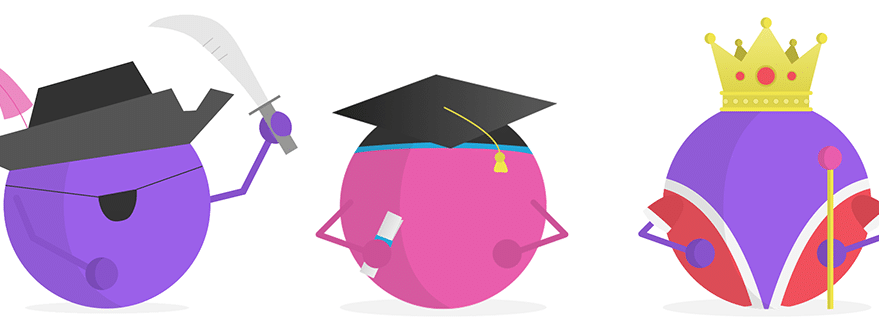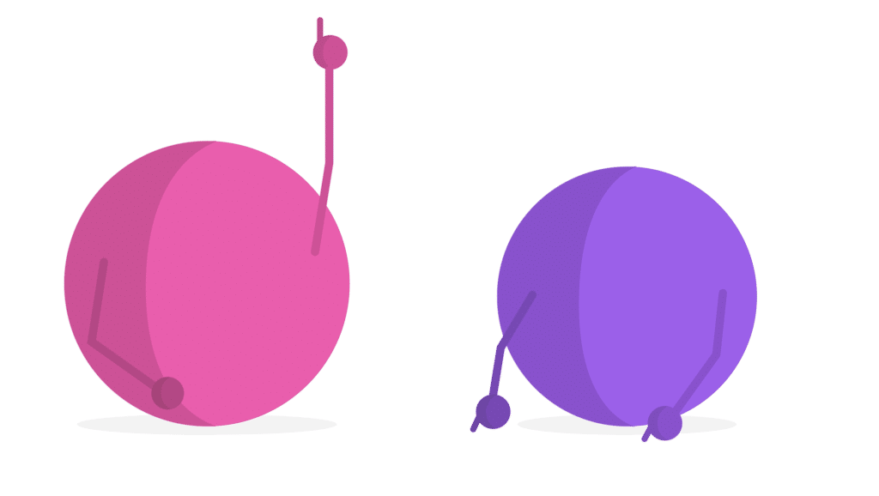Product Manager vs Project Managers often get confused. Honestly, it’s probably because the terms sound so similar. (Hey, it’s a reasonable mistake!) Plus some of the role responsibilities are related.
But the roles are distinct. They can have different styles of working and two very different perspectives on the end goal, which are sometimes at odds! When the roles are conflated — without clear recognition of who’s doing what or how decisions are made and why — then the whole team can suffer.
In this post, I’ll discuss the inevitable overlap of product and project management, as well as the key ways they differ.
We’ll also look at the risks that come with failing to define product vs. project management within your organization. At the end, I’ll offer some advice on how project managers and teams can best clarify these two important, separate roles.
How product management and project management overlap
First, this needs to be said: a product manager is not a project manager! But the reality is that product managers (PM from here on out) always end up doing some degree of project management. It’s inherent to the role.
What is project management?
Essentially, it’s guiding a set of tasks in order to meet the project’s defined scope, and ideally to do it on time and on budget. A project manager gathers the team and other resources, and determines how much time is required. While trying to keep the work on track, they gauge whether any part of the project needs adjusting: scope, resources, timelines, etc. Ultimately they work with all the different stakeholders to make it happen!
Sounds familiar, right? PMs also examine a task’s scope, the necessary resources and development time. PMs work with stakeholders across the entire company, from engineering to sales to actual customers.
Sprints are like projects
The similarity is especially striking in software organizations. In lean, product-led companies, “project management” looks like sprints. Each sprint is a project, where a bunch of tickets go in one end, and out comes development work on the other end.
The deliverable here — rather than one giant, contained initiative for the company — is any number and constellation of story points, tickets, or features. Releases are a rolling sequence of “projects” that can include various elements of the product or company.
Product Manager vs Project Manager differences
The main difference is in perspective and incentive. One is longer term and flexible, the other is shorter term and less flexible. Neither is better or worse, they’re just different.
With PMs, you’re talking specifically about projects such as release planning or big feature launches, which execute the roadmap and align with an overarching product strategy. Such projects aren’t ends in themselves. They’re moving pieces in a long-term, strategic effort to get somewhere aspirational: to solve customers’ problems in the best way possible.
In this way, product managers can look at projects with a much more flexible, dynamic outlook. Things can be added, expanded, combined — deliveries can be delayed — as long as it makes good sense in the long run.
Project managers stay focused on the project in front of them, with the goal (and challenge!) of completing it within certain constraints. Time, scope, and cost are all determined at the beginning, so the project manager’s outlook is about efficiency and efficacy. They tailor and tighten everything about the project to meet these three things, so that a great result is delivered on time and on budget.
Both perspectives are crucial to a well-functioning team. But problems arise when they aren’t clearly defined.
The problem of project management in product teams
First, let me introduce you to hats. I use the word “hat” to describe a responsibility within the team that could fall with any person, no matter their job title. You’ll understand more in a second.
Now for the trouble.
For so much of product work, there’s confusion over who the project manager is behind it. Sometimes it’s the PM, but no one clarifies it. Sometimes it’s another role wearing the project management hat (such as the product owner or Scrum Master), but no one clarifies it. And occasionally, two people hold these two distinct roles, and in that case it’s clear…maybe.
If no one on your team has the job title of Project Manager, then someone on your team is still doing the project management work. It may even be you.
3 risks of undefined project management
When someone is wearing the project manager hat — that is, they’re thinking about timelines, scope, and cost — but is not recognized as having that role, that’s very stressful for a few reasons.
Internal conflict
First, being the unofficial project manager puts a ton of cognitive load on the person saddled with a second invisible job. Are they thinking about a flexible, long-term product strategy or do they need to buckle down on budget? These are two conflicting perspectives! Who’s supporting them through this?
Product managers take on too much
PMs have a tendency to collect all the pieces and absorb tasks, especially with project management. I often see PMs laden with all the stuff other teammates just didn’t want to take on. Then they have a pile of crap to deal with every week that isn’t actually in their job description!
Confusion in the team
Finally, having one or many unofficial project managers can create a lot of confusion for the team about objectives and who owns what. Who owns the product roadmap? Who’s responsible for communicating project updates to other stakeholders?
3 tips for better project management in product teams
Here’s my advice for making clear distinctions, once and for all, between product management and project management in your team.
1. Remember which hat you’re wearing when you make decisions.

The fact is that everyone does a little bit of project management in whatever role they have. It’s important to be aware of what impulse is guiding decisions.
When wearing your PM hat, you should be thinking strategically about the big picture, solving problems for the customer, and asking the right questions. When wearing a project manager hat, you’re more concerned with scope creep and want to launch the project to meet the original requirements.
Make sure other people know what hat you’re wearing, too. Literally say it!
“With my PM hat on, I think we should do X, but my project manager hat says Y. And this is why I’m making Z decision in this way.”
It might feel silly, but it actually helps you to talk through different points of view and explain your rationale.
2. If you’re doing unrecognized project management work, make it known.
Acknowledge this to yourself, your team, and your superiors. Project management is impactful work and is a great set of skills to develop.
Also ask yourself: Is that what you want to do? If not, make that clear to your manager so that someone else can be hired for the role. If so, then make sure you’re getting support for it.
Make sure you’re being rewarded for it, too, through the right promotions and compensation.
3. Product managers and project managers should work together closely.
When there are two humans in these two distinct job titles, then they should collaborate closely! I mean lots of communication, check-ins, and (since both roles have the tendency to be nebulous) ongoing role clarification.
Both should understand upfront what they’re going to, as well as what their expectations of each other and of themselves.
This reduces chances that tasks are dropped or work is duplicated — which is generally one of the biggest frustrations I’ve found in product and development teams.
Final word for my product managers
PMs are not solely responsible for all things project management! You are just as responsible for it as anyone else on the team. Don’t let it fall in your lap without getting paid for it.
And good luck!
The post Product Manager vs Project Manager – What’s the Difference? appeared first on ProdPad | Product Management Software.

